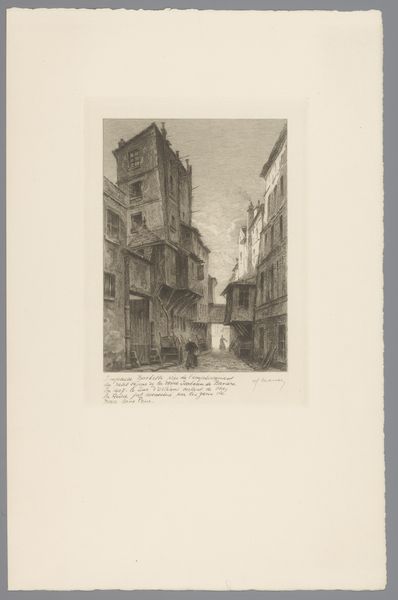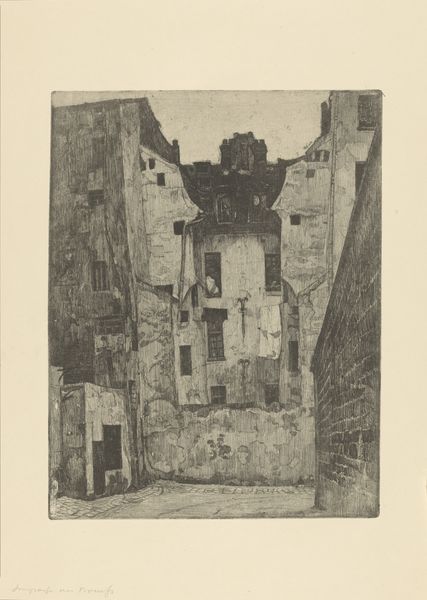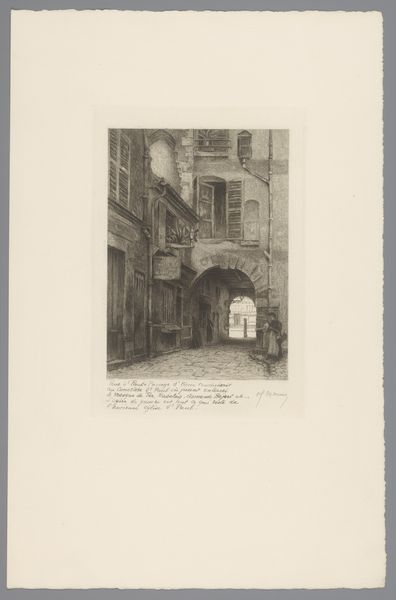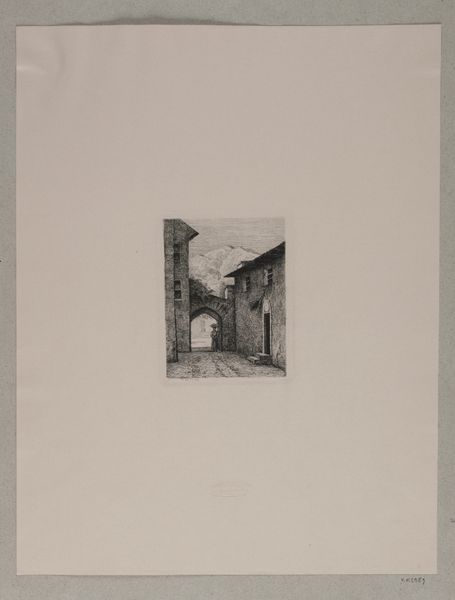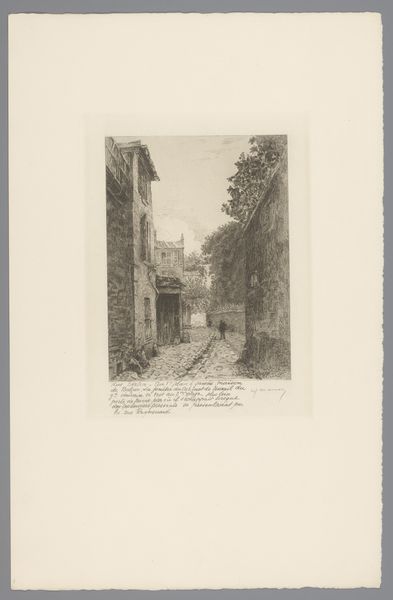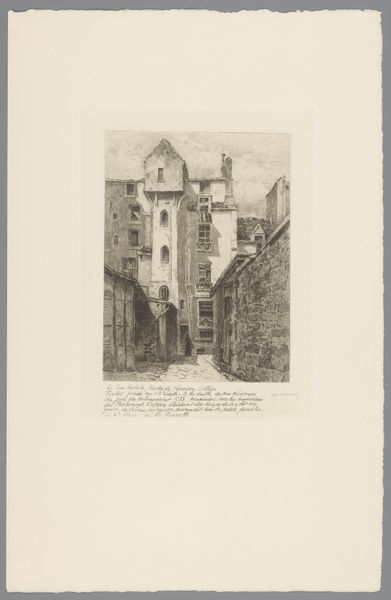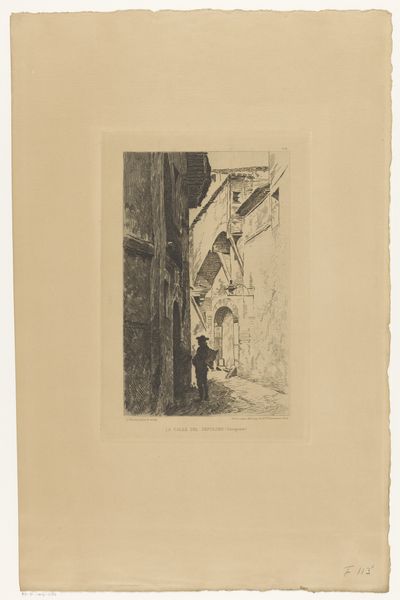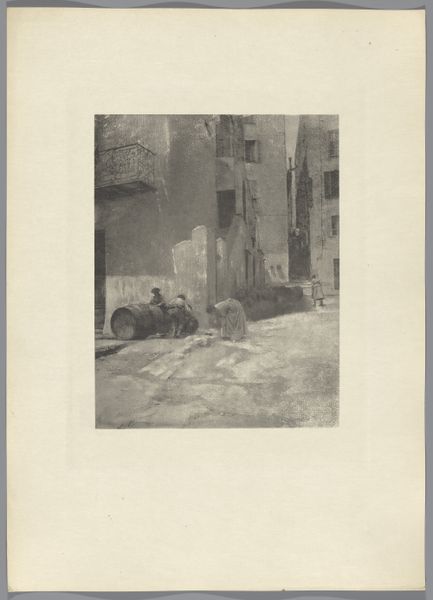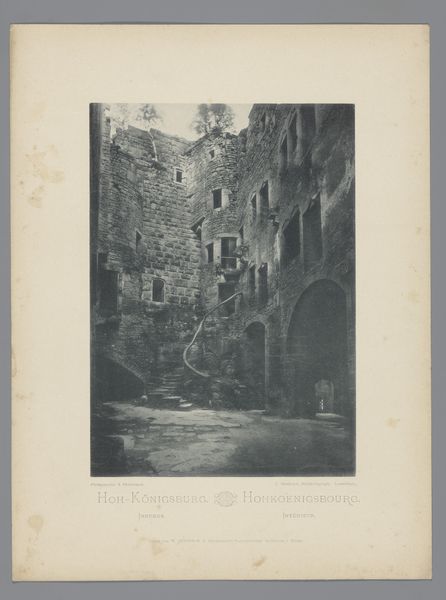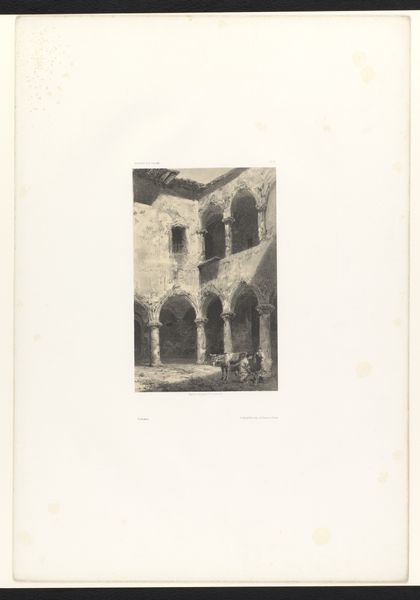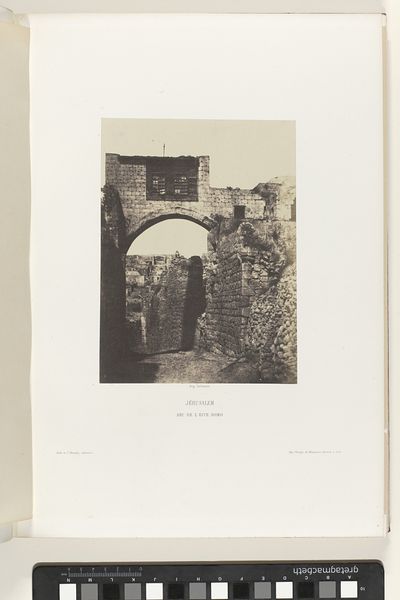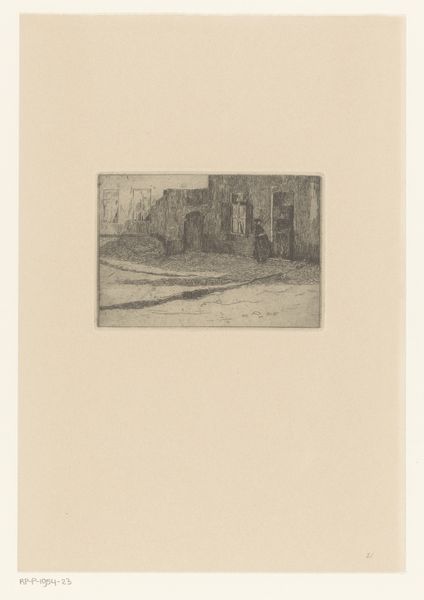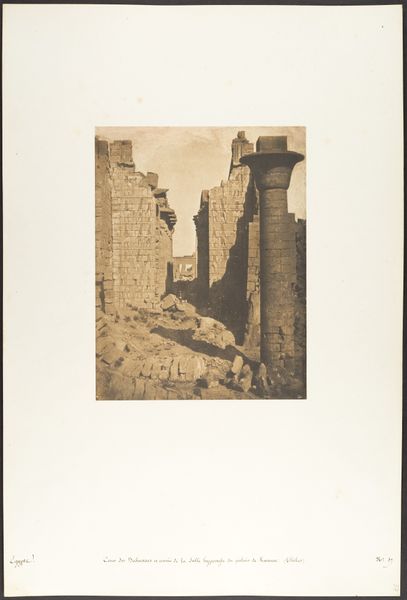
Dimensions: plate: 6 3/16 x 4 1/8 in. (15.7 x 10.5 cm) sheet: 12 15/16 x 9 3/8 in. (32.9 x 23.8 cm)
Copyright: Public Domain
Curator: At first glance, it feels rather... contained, doesn't it? A little vignette of everyday life captured in shades of gray. Editor: Indeed. Let’s delve into Ernst Oppler's "A Street in Dieppe," an etching created sometime between 1880 and 1923. The printmaking process is key here. The etching itself is a reproducible medium; consider the implications of that democratic reach when assessing his artistic intentions. Curator: It does highlight a fascinating intersection, Oppler operating within Impressionist aesthetics, typically expressed through painting, but rendering a cityscape through the graphic arts. It invites reflection on class and access; was etching used to disseminate these modern visions to wider audiences? Editor: Absolutely, especially if it was published. We need to ask: Who had access to these images and what narratives did they reinforce or challenge regarding modern life in European cities? Also, given the artist's biography as a Jew in Europe, how did that position impact or inform the content and circulation of the art object? Curator: You are correct to point out these complex threads. On the level of pure material analysis, the quality of the paper matters. Does it hint at mass production, and was it printed in a widely available periodical? These sorts of considerations help one place the art within an industrialized cultural system. Editor: The very notion of "street life" suggests particular power dynamics between citizens and social order—one cannot ignore this implication. Consider, too, gendered implications; it might be valuable to research where the author stood politically regarding women at this time and to think critically if this viewpoint translates or translates subtly via representation and style. Curator: Returning to the technical execution, Oppler expertly uses the etching technique to suggest atmosphere. See how he builds depth through varying densities of line, a testament to skill. We are shown not simply the subject of urban modernity, but *made* aware of a tangible work process. Editor: Thanks to your observation of his approach and this art's social setting, we better understand not only its place in time, but it also raises important questions for our own era. Curator: Indeed—a fine exchange about the way the labor of making helps define and give historical relevance to such pictures.
Comments
No comments
Be the first to comment and join the conversation on the ultimate creative platform.
